“Technology should just blend into the background and silently do its job”. If you conform to this particular school of thought, a smart ring might just be for you. Just a few weeks ago, I got to try out the Boat Smart Ring (review), and now I have one from Noise, dubbed the Luna Ring. Here are some observations about the device that might be useful in case you want to know how well it fares.
Table of Contents
Design
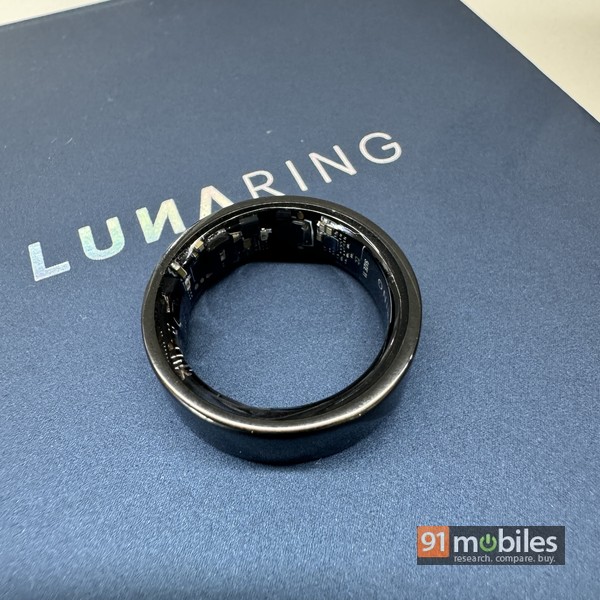
The Luna ring is available in three different colours and five different sizes. In comparison, the Boat offering only comes in one colour and three sizes. So Noise is definitely trying to give more choice here and cater to a wider audience with its debut smart ring. Fashioned out of titanium, the Luna Ring is lightweight and slimmer in comparison to Boat’s offering, making the former more comfortable to wear over prolonged periods. While the overall design is minimalistic, as it should be, there are a couple of things of note. One, the sensors and the PCB on the inside of the ring seemingly look exposed, but are covered by a thin transparent layer. Secondly, the top of the ring has a tiny ridge which is barely visible, but can be felt when you run your finger across it. This gives you an idea of how to position the ring and wear it such that the sensors face the palm and not in any other direction. This is required for accurate measurement. Unlike the Boat ring, there’s no visible pogo pin connector here for charging.
![]() Features
Features
Using PPG sensors to measure aspects like heart rate, SpO2 and heart rate variability, a motion sensor to track activity, and a temperature sensor to measure skin temperature, the Luna Ring attempts to provide insights into your health, much like a fitness band or smartwatch. There is, however, no way for you to interact with the ring, as it’s just meant to be worn 24 x 7, while the app syncs, collects and displays the data captured. This is one aspect where the Boat Smart Ring seems to have an upper hand, at least on paper, since it features a touch-sensitive zone which can be used as a remote camera shutter, to flick through short videos, etc. 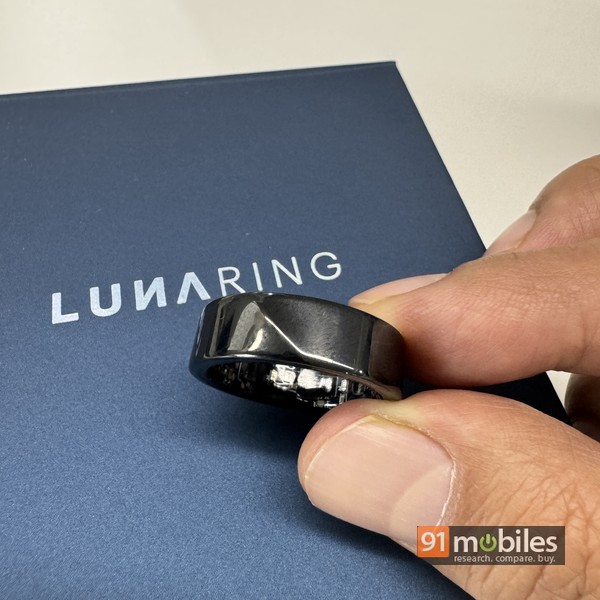
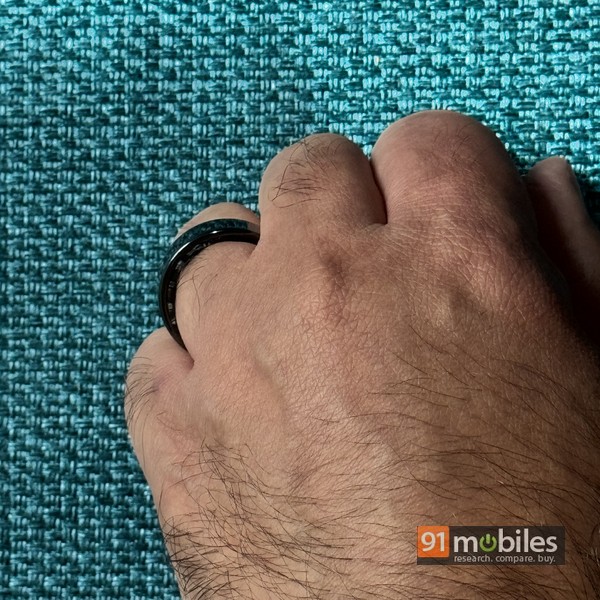
Since the core proposition of a smart ring is the fact that it sits close to the skin and is able to capture metrics which are supposed to be more accurate than regular smartwatches, I think Noise did well to get a third-party organisation to review and validate their values. To validate the accuracy of the health data, Noise has partnered with International Institute of Information Technology Hyderabad, which says that the data captured by the ring is 91 percent accurate… and that certainly works in Noise’s favour by instilling more confidence into prospective buyers’ minds.
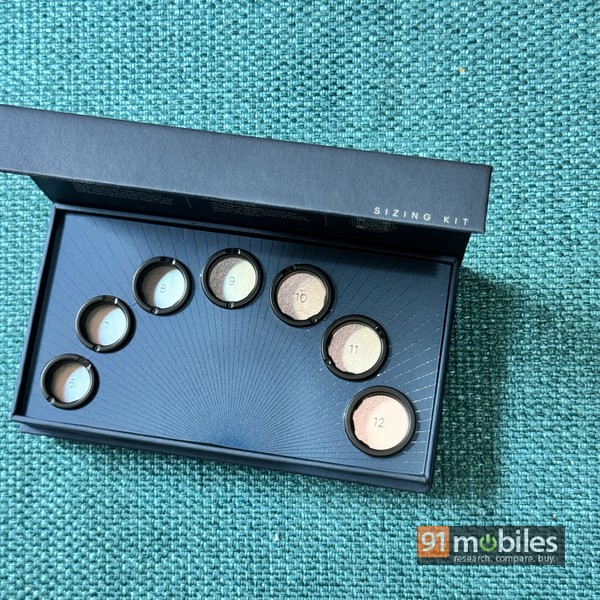
Noise also offers a sizing kit in advance to let potential buyers try out and select the size which is the best fit for them. The index finger is supposed to be the most ideal for wearing the smart ring but noises you can also wear it in your middle or ring fingers as well.
App and connectivity
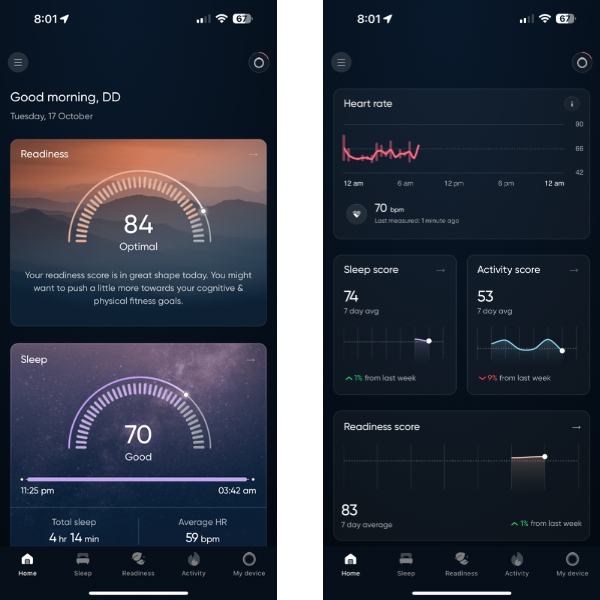
Talking about the app, this device syncs with the Luna Ring app available on both Android and iOS. The app experience is good, and the interface is well-designed. The home screen of the app presents a summary dashboard of all your activity and sleep along with the scores that it has assigned to various aspects. The other tabs show sleep, readiness and activity, and you can dive into each of those tabs to take a look at detailed metrics as well as historical data. The app also offers suggestions and highlights if you’re falling short in terms of getting enough sleep, being active etc. One aspect that I found a little odd is that you need to add workouts manually, and strangely, you can only do that for the current day. The app doesn’t allow you to go back in time to add a workout that you might have missed adding. You can also view the ring’s battery level in the app. The app also doesn’t sync data with platforms like Apple Health or Google Fit at the moment, which is a bummer.
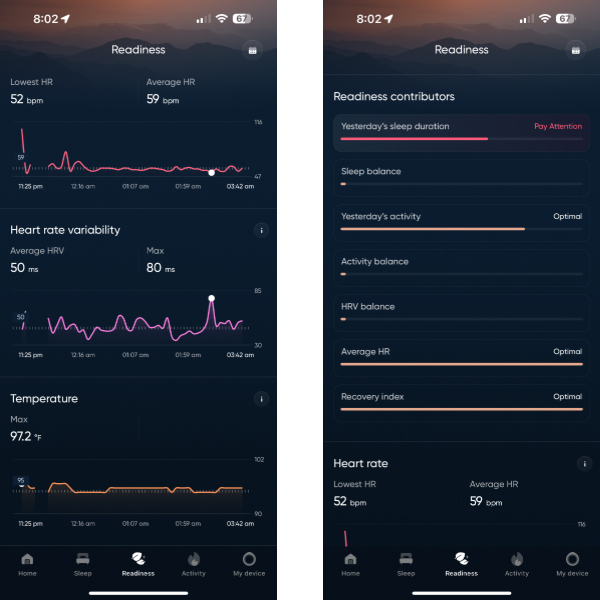
Performance and battery life
In terms of physical data and health metrics, which is its core proposition, I think the Luna Ring captures accurate numbers, matching my own testing and corroborated using other fitness trackers and smartwatches as well. Once synced, the Luna Ring app presents a detailed analysis of your physical activity, and displays data on sleep patterns, activity, heart rate variability etc, for the day. Do note that measurements like SpO2 and skin temperature etc cannot be taken on demand — instead, the data is accumulated over the day and as you sleep.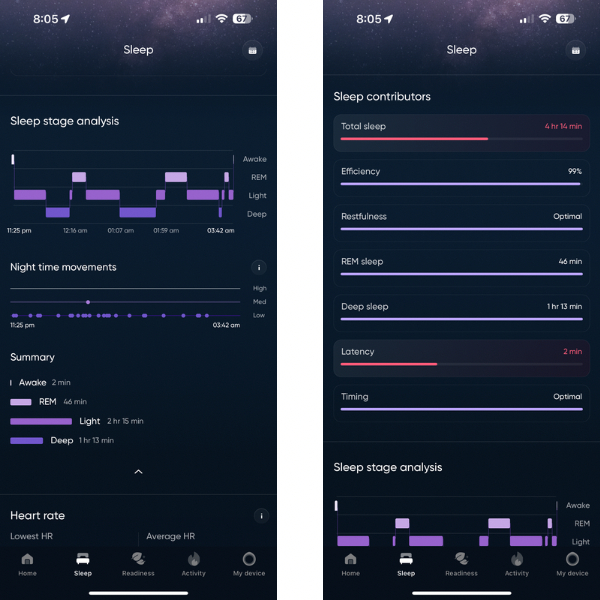
You can view more details under each of these parameters, and go back in time to view historical data and trends. Based on these figures, the app also calculates a readiness score which indicates how prepared or ready you are to go on about your day. In some sense this is similar to the body battery figures that Garmin shows with its smartwatches. Do note that this is only an indicative score which is calculated by algorithms that source data from the various inputs gathered by the Luna Ring.
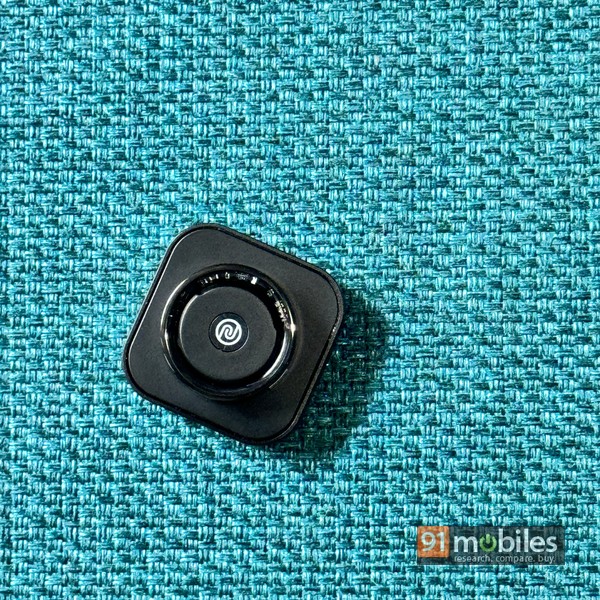
Noise bundles a proprietary charging dock with the Luna Ring, along with a Type-C to Type-C cable. The charging dock has an appropriately sized protrusion on top, over which the ring fits snugly for charging. Sue to this, the charging dock for each ring size is different. Once you drop the ring over it and plug it in, a small Noise logo in the middle lights up and starts blinking to indicate that charging is in progress. One niggle here is that sometimes, the ring doesn’t align with the charger properly, and you need to turn it around till the contacts line up and it starts juicing up. A full charge takes a couple of hours, and the ring lasts about 5 days before it needs to be juiced up again.
Verdict
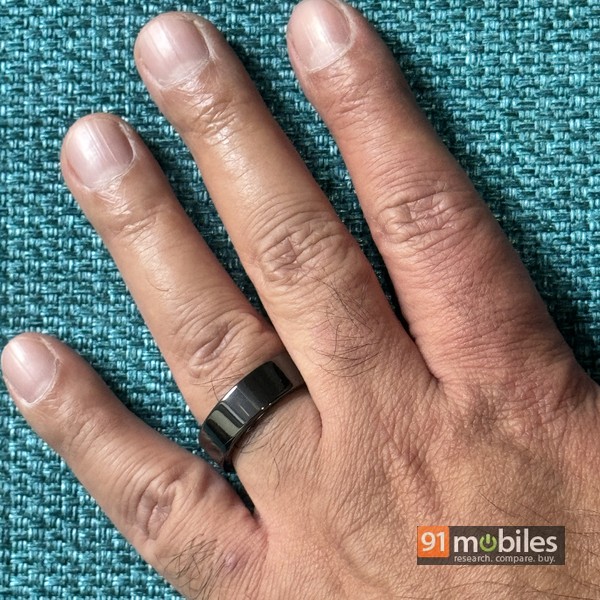
For its asking price of Rs 15,999, the Luna Ring does seem priced on the higher side, and at these pricing levels, I’m not sure if the smart ring category will be able to go mainstream. Many folks might not be too concerned with the accuracy of activity and health data, and be completely fine with seeing just indicative numbers, when weighing a smart ring’s features against a smartwatch. The smartwatch segment, where Noise has an extensive portfolio of its own, could be a rough competitor to beat. Apart from early adopters, a smart ring could appeal to those who are averse to wearing watches, especially while sleeping. As I mentioned before, the device also works well for those who believe that technology should just blend into the background and do its job silently. And to be fair, the Luna Ring is able to do that to a fairly large extent in my opinion. Overall, I think the Luna Ring by Noise is a good effort in the right direction, and whether that direction is right for you is something for you to figure out.
Editor’s rating: 7.5 / 10
Pros:
- Slim and lightweight
- Well-designed app
- Useful data and insights
Cons:
- Workouts need to be added manually
- No synchronisation with Apple Health or Google Fit
- Charger alignment issues





